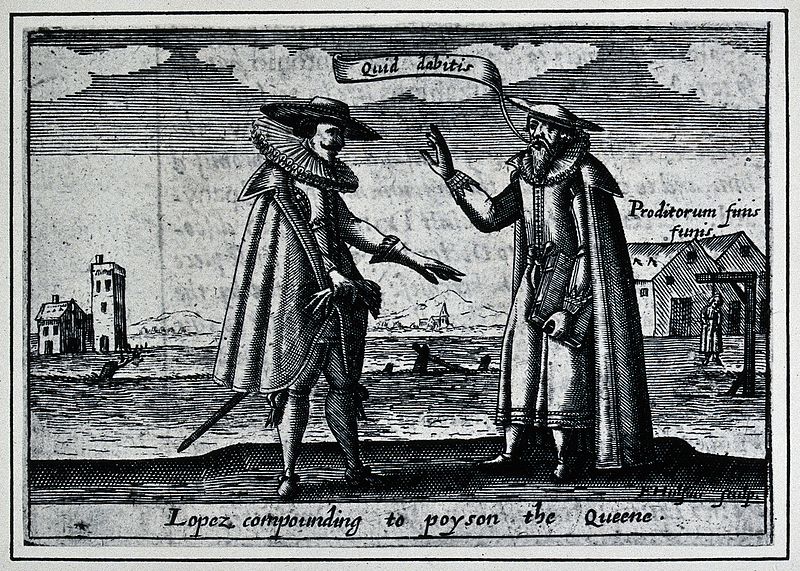Published by Sally Monroe.
The Thorek Manuscript and Rare Book Collection is home to Melchior Weikard’s Der Philosophische Artz, a book which is perhaps most famous in the medical community for containing the first accurate description of what we now call Attention Deficit Hyperactivity Disorder. Published in 1790, the Museum’s copy of Der Philosophische Artz happens to contain a note written in an unknown hand, pointing us to another of Weikard’s accomplishments. The note reads: “The author of this book was the personal physician of Katherine II of Russia.” And it’s true – Weikard was the royal physician for the Tsarina, better known as Catherine the Great, from 1784 to 1789.
What was it like to be a physician in a royal court? Not much is known about Weikard’s time with Catherine the Great, except that he left after just five years under some sort of duress. But we can draw on other accounts to piece together what life must have been like as a physician for nobility.
Dr. William Butts, for example, began employment at the court of King Henry VIII in 1528. The King paid him an annual salary of £100, or a bit over $50,000 in today’s money. Butts was outfitted in unusually lavish livery (in this case, green and blue damask) and was granted two servants of his own. He even had his portrait painted by one of the most sought-after artists of the 16th century, Hans Holbein the Younger.

Portrait of Dr. William Butts by Hans Holbein the Younger
In exchange for these niceties, Butts was expected to contend with myriad illnesses that befell various members of King Henry VIII’s court, including his seemingly endless parade of wives. When the King’s second wife, Anne Boleyn, fell ill to the mysterious “English sweating sickness,” Butts was able to nurse her fully back to health (unfortunately, Henry had her beheaded not long after). Dr. Butts also intervened on behalf of a severely ill Princess Mary, whose own court physicians were reluctant to treat her for fear that they might be blamed for her death; after an examination, Butts declared that Mary was likely to make a full recovery should she be treated properly, giving her physicians enough peace of mind to return to her aid.
A far less fortunate but equally powerful English royal physician was Roderigo Lopez, who was employed at the court of Queen Elizabeth I beginning in 1581. Lopez was especially learned in diets, purges, phlebotomies, and bleedings, and was also renowned for his skills as a surgeon. At Elizabeth’s court, he grew both highly esteemed and exceedingly wealthy, enough so that he owned his own land and was able to send one of his sons to college.
However, Lopez made the great mistake of angering one of Elizabeth’s closest friends, the Earl of Essex, when he let slip the fact that he had treated said Earl for some variety of venereal disease. The Earl subsequently began a campaign of slander against Lopez, claiming that the physician had attempted to poison the Queen. Under threat of torture, Lopez falsely confessed to the poisoning, and was executed on June 7th, 1594.

Image of English Physician Rodrigo Lopez (right)
Perhaps Weikard was wise to leave Catherine the Great’s court after just a few short years, considering the intrigue and blame that might befall any person entrusted with the very life of a king or queen. In any case, Weikard had an undeniable distaste for the position of royal physician; Tsar Paul I, who succeeded Catherine the Great, tried to lure him back to the Russian court with no success. Instead, Dr. Weikard returned to the German city of Fulda, where he was employed as the director of the Medicinalanstalten until his death in 1803.
Sources:
Abernethy, Susan. “Dr. William Butts, Royal Physician.” The Freelance History Writer. 16 March 2018. https://thefreelancehistorywriter.com/2018/03/16/dr-william-butts-royal-physician/
“The History of ADHD.” Atlassubluxation. 5 November 2014. https://atlassubluxation.wordpress.com/2014/11/05/the-history-of-adhd/
Weisz, George M. and Donatella Lippi. “Roderigo Lopez, Physician-in-Chief to Queen Elizabeth I of Engliand.” US National Library of Medicine. 31 July 2017. https://www.ncbi.nlm.nih.gov/pmc/articles/PMC5548115/
Sally Monroe is the current Collections Intern (Library) at IMSS and a graduate student in the Museum and Exhibition Studies program at the University of Illinois at Chicago. She is interested in the intersection of cultural spaces and representations of pain.

